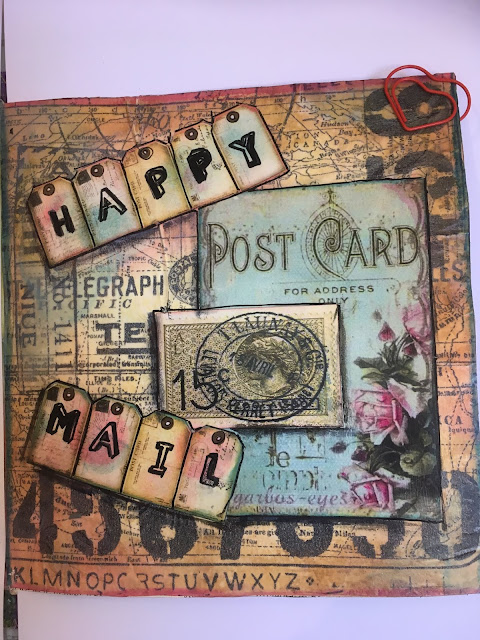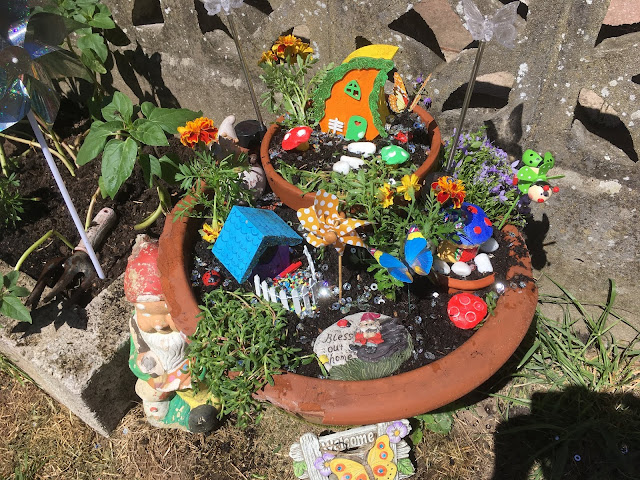Having completed the inside pages of my journal I am now going to make the cover using a material I discovered a few months ago at a workshop at my local crafting crop. We used this material to make a cover for a note book. I showed this in a previous post.
The material was washable wallpaper lining that looked and felt like soft leather once we had processed it. Its a waterproof paper that doesn't rip and is pretty tough. Decorators use it to cover cracked walls. The brand we used was called "Wall Doctor". It gives a strong but flexible finish which is ideal for this type of journal.

I measured my book and cut a piece of paper that was twice the height of my book because I intend to use a double thickness of paper for the cover to give the cover extra strength. I then scrunched the smooth paper up and kept scrunching until the paper was completely soft and crinkled. The photo shows the difference from start to finish. The smooth paper is on the right of the photo.
Once I had it soft I washed the paper in cold water containing a little washing up liquid, then rinsed it throughly. Washing the paper doesn't alter the strength. I let is dry slightly but not completely. The dampness helps the paint/ ink to blend well into the paper.
You can use a variety of medium to colour the paper from inks to acrylic paints, sprayed or painted on.

I used Dyan Reavely's Dylusions paints. I used red, purple, blue and yellow to decorate my sheet. I simply sponged, rubbed and dabbed the colours onto the sheet using a normal cut up sponge. The dots in this picture are from my own fingers that got pretty messy so I decided to use them!
Once I was happy with my design I left it to air dry. If the paper is very wet the colours can blend more and even become paler so be aware that the dry sheet might not turn out exactly how you expect.
I then folded the paper in half and stuck both layers with strong ( Gorilla) glue and left it to dry. I burnished the sheet well by using an old loyalty card and bone folder to make sure the halves stuck well. Once dry I trimmed the cover to fit the pages.

I stamped the cover to add more detail using Stazon inks and various stamps I have in my stash. I used the midi Stazon colours but they tended to look black whatever colour I used. I think it was something to do with the background colours and the material being used.
Given the cover will receive a lot of use being opened and closed frequently I strengthened the edges further by stitching them with my sewing machine.

Finally I stitched the cover to the book in the same way as I stitched the insertions together. This time I started stitching from the outside inward so that there would be excess thread left on the outside. I did this so that I can use it to thread bead or elements onto the threads in order to decorate the book once I have filled it up. I won't do this before hand because the pages won't lie flat if there are beads etc are there getting in the way. I also intend to decorate the cover in some way too.

It also created some decorative element to the cover. I simply used yellow cotton to match the ribbon and zig-g stitches. I added the yellow ribbon to create a closure for the book. I left plenty of excess ribbon so the book would still close as the pages thicken when elements are added.
I could just as easily have left the insertions loose and sewn the pages and cover together at the same time but I figured the double set of stitches would make the book stronger. In the past I have also have added smaller insertions interspersed between a few pages to add further interest and challenges to my journal project.
Next time I make this journal I might make two sets of insertions inside the cover to make a 24 page book. I don't want too many pages because a thick journal can become very bulky and difficult to work on after a while.
Now its time to start using the journal!



















































